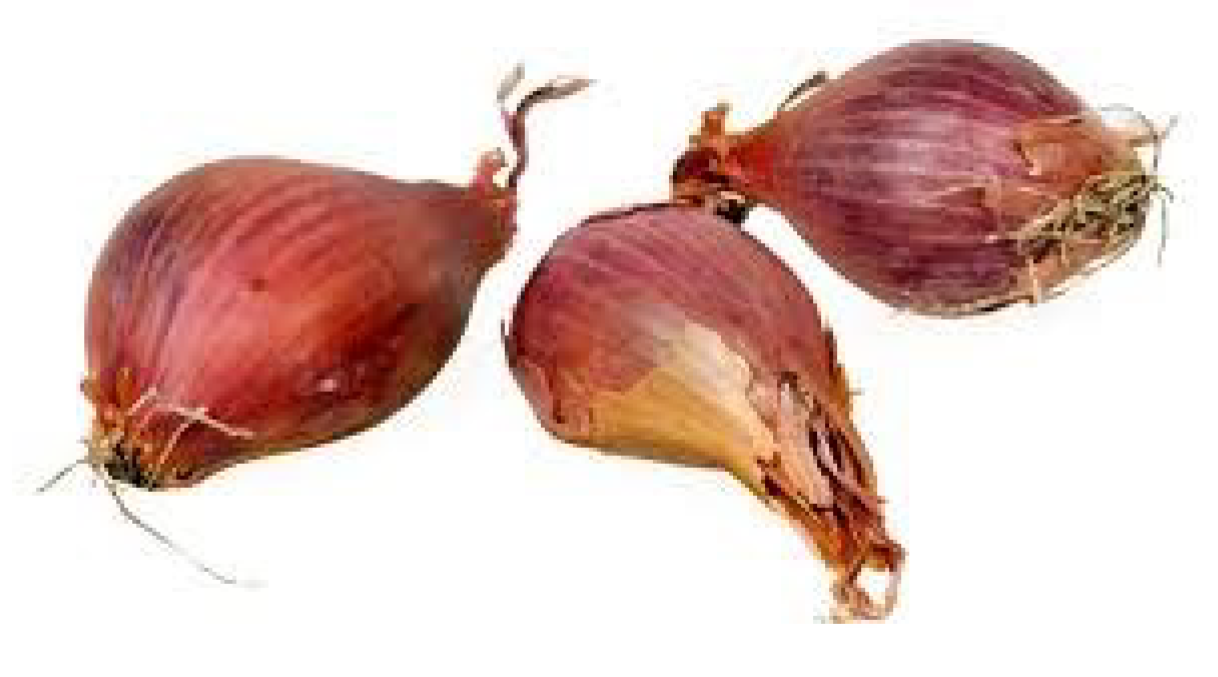3.7: Mushrooms, Truffles and Onions
- Page ID
- 21424
\( \newcommand{\vecs}[1]{\overset { \scriptstyle \rightharpoonup} {\mathbf{#1}} } \)
\( \newcommand{\vecd}[1]{\overset{-\!-\!\rightharpoonup}{\vphantom{a}\smash {#1}}} \)
\( \newcommand{\id}{\mathrm{id}}\) \( \newcommand{\Span}{\mathrm{span}}\)
( \newcommand{\kernel}{\mathrm{null}\,}\) \( \newcommand{\range}{\mathrm{range}\,}\)
\( \newcommand{\RealPart}{\mathrm{Re}}\) \( \newcommand{\ImaginaryPart}{\mathrm{Im}}\)
\( \newcommand{\Argument}{\mathrm{Arg}}\) \( \newcommand{\norm}[1]{\| #1 \|}\)
\( \newcommand{\inner}[2]{\langle #1, #2 \rangle}\)
\( \newcommand{\Span}{\mathrm{span}}\)
\( \newcommand{\id}{\mathrm{id}}\)
\( \newcommand{\Span}{\mathrm{span}}\)
\( \newcommand{\kernel}{\mathrm{null}\,}\)
\( \newcommand{\range}{\mathrm{range}\,}\)
\( \newcommand{\RealPart}{\mathrm{Re}}\)
\( \newcommand{\ImaginaryPart}{\mathrm{Im}}\)
\( \newcommand{\Argument}{\mathrm{Arg}}\)
\( \newcommand{\norm}[1]{\| #1 \|}\)
\( \newcommand{\inner}[2]{\langle #1, #2 \rangle}\)
\( \newcommand{\Span}{\mathrm{span}}\) \( \newcommand{\AA}{\unicode[.8,0]{x212B}}\)
\( \newcommand{\vectorA}[1]{\vec{#1}} % arrow\)
\( \newcommand{\vectorAt}[1]{\vec{\text{#1}}} % arrow\)
\( \newcommand{\vectorB}[1]{\overset { \scriptstyle \rightharpoonup} {\mathbf{#1}} } \)
\( \newcommand{\vectorC}[1]{\textbf{#1}} \)
\( \newcommand{\vectorD}[1]{\overrightarrow{#1}} \)
\( \newcommand{\vectorDt}[1]{\overrightarrow{\text{#1}}} \)
\( \newcommand{\vectE}[1]{\overset{-\!-\!\rightharpoonup}{\vphantom{a}\smash{\mathbf {#1}}}} \)
\( \newcommand{\vecs}[1]{\overset { \scriptstyle \rightharpoonup} {\mathbf{#1}} } \)
\( \newcommand{\vecd}[1]{\overset{-\!-\!\rightharpoonup}{\vphantom{a}\smash {#1}}} \)
\(\newcommand{\avec}{\mathbf a}\) \(\newcommand{\bvec}{\mathbf b}\) \(\newcommand{\cvec}{\mathbf c}\) \(\newcommand{\dvec}{\mathbf d}\) \(\newcommand{\dtil}{\widetilde{\mathbf d}}\) \(\newcommand{\evec}{\mathbf e}\) \(\newcommand{\fvec}{\mathbf f}\) \(\newcommand{\nvec}{\mathbf n}\) \(\newcommand{\pvec}{\mathbf p}\) \(\newcommand{\qvec}{\mathbf q}\) \(\newcommand{\svec}{\mathbf s}\) \(\newcommand{\tvec}{\mathbf t}\) \(\newcommand{\uvec}{\mathbf u}\) \(\newcommand{\vvec}{\mathbf v}\) \(\newcommand{\wvec}{\mathbf w}\) \(\newcommand{\xvec}{\mathbf x}\) \(\newcommand{\yvec}{\mathbf y}\) \(\newcommand{\zvec}{\mathbf z}\) \(\newcommand{\rvec}{\mathbf r}\) \(\newcommand{\mvec}{\mathbf m}\) \(\newcommand{\zerovec}{\mathbf 0}\) \(\newcommand{\onevec}{\mathbf 1}\) \(\newcommand{\real}{\mathbb R}\) \(\newcommand{\twovec}[2]{\left[\begin{array}{r}#1 \\ #2 \end{array}\right]}\) \(\newcommand{\ctwovec}[2]{\left[\begin{array}{c}#1 \\ #2 \end{array}\right]}\) \(\newcommand{\threevec}[3]{\left[\begin{array}{r}#1 \\ #2 \\ #3 \end{array}\right]}\) \(\newcommand{\cthreevec}[3]{\left[\begin{array}{c}#1 \\ #2 \\ #3 \end{array}\right]}\) \(\newcommand{\fourvec}[4]{\left[\begin{array}{r}#1 \\ #2 \\ #3 \\ #4 \end{array}\right]}\) \(\newcommand{\cfourvec}[4]{\left[\begin{array}{c}#1 \\ #2 \\ #3 \\ #4 \end{array}\right]}\) \(\newcommand{\fivevec}[5]{\left[\begin{array}{r}#1 \\ #2 \\ #3 \\ #4 \\ #5 \\ \end{array}\right]}\) \(\newcommand{\cfivevec}[5]{\left[\begin{array}{c}#1 \\ #2 \\ #3 \\ #4 \\ #5 \\ \end{array}\right]}\) \(\newcommand{\mattwo}[4]{\left[\begin{array}{rr}#1 \amp #2 \\ #3 \amp #4 \\ \end{array}\right]}\) \(\newcommand{\laspan}[1]{\text{Span}\{#1\}}\) \(\newcommand{\bcal}{\cal B}\) \(\newcommand{\ccal}{\cal C}\) \(\newcommand{\scal}{\cal S}\) \(\newcommand{\wcal}{\cal W}\) \(\newcommand{\ecal}{\cal E}\) \(\newcommand{\coords}[2]{\left\{#1\right\}_{#2}}\) \(\newcommand{\gray}[1]{\color{gray}{#1}}\) \(\newcommand{\lgray}[1]{\color{lightgray}{#1}}\) \(\newcommand{\rank}{\operatorname{rank}}\) \(\newcommand{\row}{\text{Row}}\) \(\newcommand{\col}{\text{Col}}\) \(\renewcommand{\row}{\text{Row}}\) \(\newcommand{\nul}{\text{Nul}}\) \(\newcommand{\var}{\text{Var}}\) \(\newcommand{\corr}{\text{corr}}\) \(\newcommand{\len}[1]{\left|#1\right|}\) \(\newcommand{\bbar}{\overline{\bvec}}\) \(\newcommand{\bhat}{\widehat{\bvec}}\) \(\newcommand{\bperp}{\bvec^\perp}\) \(\newcommand{\xhat}{\widehat{\xvec}}\) \(\newcommand{\vhat}{\widehat{\vvec}}\) \(\newcommand{\uhat}{\widehat{\uvec}}\) \(\newcommand{\what}{\widehat{\wvec}}\) \(\newcommand{\Sighat}{\widehat{\Sigma}}\) \(\newcommand{\lt}{<}\) \(\newcommand{\gt}{>}\) \(\newcommand{\amp}{&}\) \(\definecolor{fillinmathshade}{gray}{0.9}\)Mushrooms
Mushrooms are members of a broad category of plants known as fungi. (Fungi have no seeds, stems, or flowers; they reproduce through spores.) Mushrooms have a stalk with an umbrella-like top. Although not actually a vegetable, mushrooms are used and served in much the same manner as vegetables.
Several types of cultivated mushroom are available. They include the common (or white), shiitake, crimini (also known as the Italian brown), straw, enokidake (also called enoki) and cloud ear (also known as wood ear or Chinese black). Button mushrooms are the smallest, most immature form of the common mushroom. The largest cultivated mushroom is the portabella, which is actually an overgrown crimini; it can grow up to 6 inches (15 centimeters) in diameter.
Mushroom safety. Some mushrooms are deadly; others can cause severe illness. Picking edible mushrooms in the wild is not sim ply a process of comparing specimens with photographs or illustration s in a guidebook. So do not gather mushrooms from the wild unless you are accompanied by a well-trained, experienced mycologist or guide. Always purchase wild mushrooms from reputable purveyors.
Many wild mushrooms are gathered and sold by specialty purveyors. Because wild mushroom spores are spread around the world by air currents, the same item may be found in several areas, each with a different common name. Wild mushrooms have a stronger earthy or nutty flavor than cultivated mushrooms, and should generally be cooked before eating.
Mushrooms, whether cultivated or gathered from the wild, are available fresh, canned or dried. Because mushrooms are composed of up to 80 percent water, dried products are often the most economical, even though they may cost hundreds of dollars per pound. Dried mushrooms can be stored in a cool, dry place for months. When needed, they are rehydrated by soaking in warm water until soft, approximately 10 to 20 minutes.
Choose fresh mushrooms that are clean, without soft or moist spots or blemishes. Fresh cultivated mushrooms are generally available all year; fresh wild mushrooms are available seasonally, usually during the summer and fall. Cultivated mushrooms with exposed gills (the ridges on the underside of the umbrella-like top) are old and should be avoided. Fresh mushrooms can be refrigerated in an open container for up to 5 days. Normally, it is not necessary to peel mushrooms; if they are dirty, they should be quickly rinsed (not soaked) in cool water just before use.
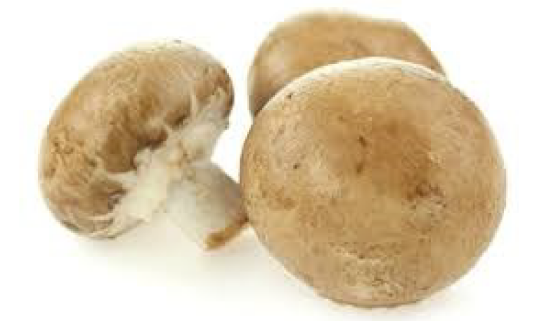
Truffles
Truffles are actually tubers that grow near the roots of oak or beech trees. They can be cultivated only to the extent that oak groves are planted to encourage truffle growth. The two principal varieties are the Perigord (black) and the Piedmontese (white). Fresh truffles are gathered in the fall and are rarely marketed outside their locale. Truffles, especially white ones, have a strong aroma and flavor, requiring only a small amount to add their special flavor to soups, sauces, pasta and other items. Black truffles are often used as a garnish or to flavor pates, terrines, or egg dishes. Because fresh imported truffles can cost several hundred dollars per pound, most kitchens purchase truffles canned, dried or processed.
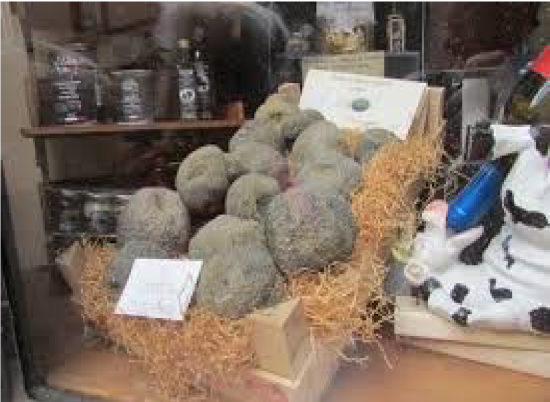
Olives
Olives are the fruit of a tree native to the Mediterranean area. Green olives are those harvested unripened; black olives are fully ripened. The raw fruit is inedibly bitter and must be washed, soaked and cured or pickled before eating. Green olives should have a smooth, tight skin. Ripe olives will be glossy but softer, with a slightly wrinkled skin. Many varieties and flavors are available, from the tiny black French Nicoise to the large purplish Greek Kalamata. Ripe black olives are packaged in a range of seven sizes, from small to super-colossal. Unripe green olives are available in eleven sizes, from sub-petite to super-colossal. Both black and green olives are available whole (with the pit), pitted, sliced, halved or in pieces. Pitted green olives are often stuffed with strips of pimento, jalapeno pepper, almonds, or other foods for flavor and appearance.
Olives are used as a finger food for snacks or hors d'oeuvre, or added to salads or pasta. They may even be cooked in breads, soups, sauces, stews and casseroles. A paste made of minced ripe olives, known as tapenade, is used as a dip or condiment.
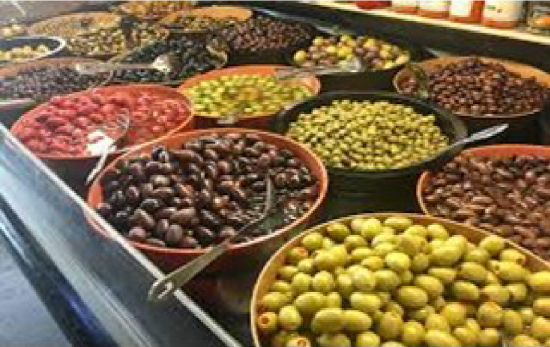
Onions
Bulb Onions
Common or bulb onions may be white, yellow (Bermuda or Spanish) or red (purple). Medium-sized yellow and white onions are the most strongly flavored. Larger onions tend to be sweeter and milder. Widely used as a flavoring ingredient, onions are indispensable in mirepoix. Onions are also prepared as a side dish by deep-frying, roasting, grilling, steaming or boiling. Pearl onions are small, about 1 / 2 inch (1.25 centimeters) in diameter, with yellow or white skins. They have a mild flavor and can be grilled, boiled, roasted or sautéed whole as a side dish, or used in soups or stews.
Sweet onion varieties include the Vidalia, Maui, Walla-Walla, Super Sweet and OSO Sweet. These bulb onions have a higher water content, more sugar and less sulfuric compounds than other onions. They are best for eating raw, making them good choices for sandwiches, salads, hamburgers and the like. Cooking destroys much of their perceived sweetness and special flavor. Each sweet onion variety is available for a brief period from January through August. All have a very short shelf life and should not be stored more than a few weeks.
- Select onions that are firm and dry and feel heavy. The outer skins should be dry and brittle. Avoid onions that have begun to sprout. Store onions in a cool, dry, well-ventilated area. Do not refrigerate onions until they are cut. With the exception of sweet onions, most varieties are available all year.
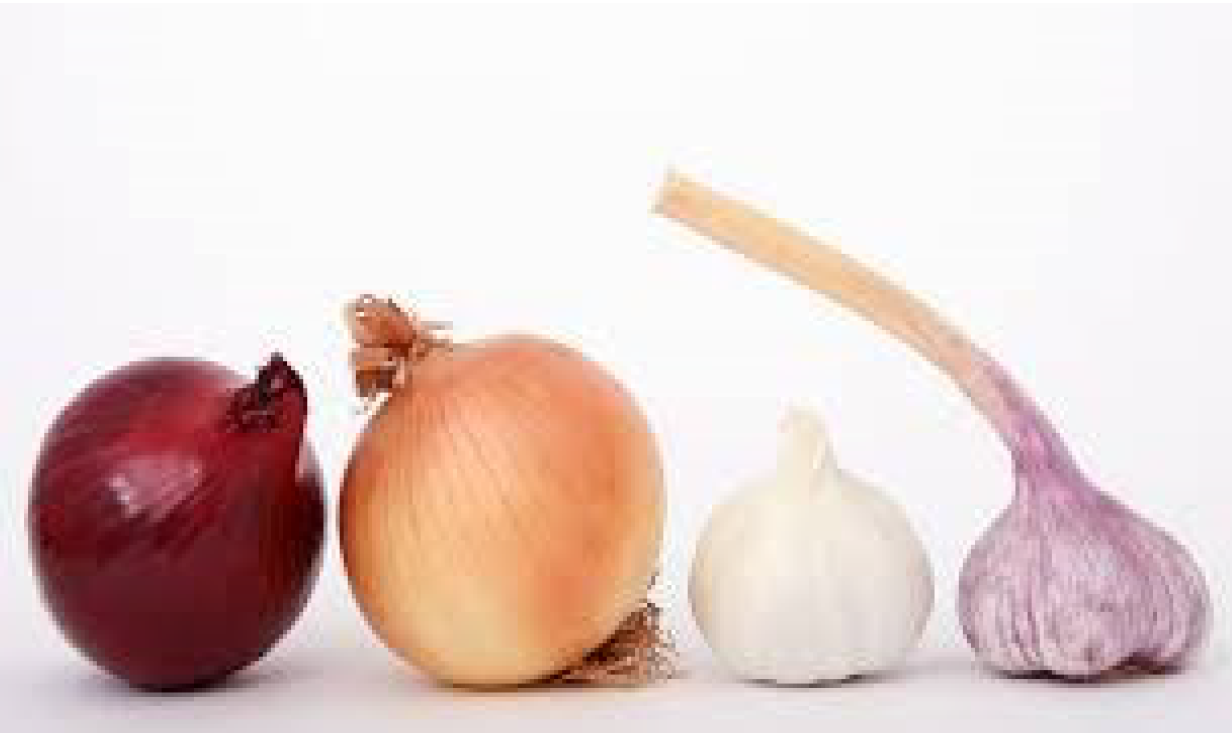
Onion Varietals
Garlic
Garlic is also used in almost all the world's cuisines. A head of garlic is composed of many small cloves. Each clove is wrapped in a thin husk or peel; the entire head is encased in several thin layers of papery husk. Of the three hundred or so types of garlic known, only three are commercially significant. The most common is pure white, with a sharp flavor. A Mexican variety is pale pink and more strongly flavored. Elephant garlic is app le -sized and particularly mild. Although whole bulbs can be baked or roasted, garlic is most often separated into cloves, peeled, sliced, minced or crushed and used to flavor a wide variety of dishes. When using garlic, remember that the more finely the cloves are crushed, the stronger the flavor will be. Cooking reduces garlic's pungency; the longer it is cooked, the milder it becomes.
- Select firm, dry bulbs with tightly closed cloves and smooth skins. Avoid bulbs with green sprouts. Store fresh garlic in a cool, well-ventilated place; do not refrigerate. Fresh garlic is available all year. Jars of processed and pickled garlic products are also available.
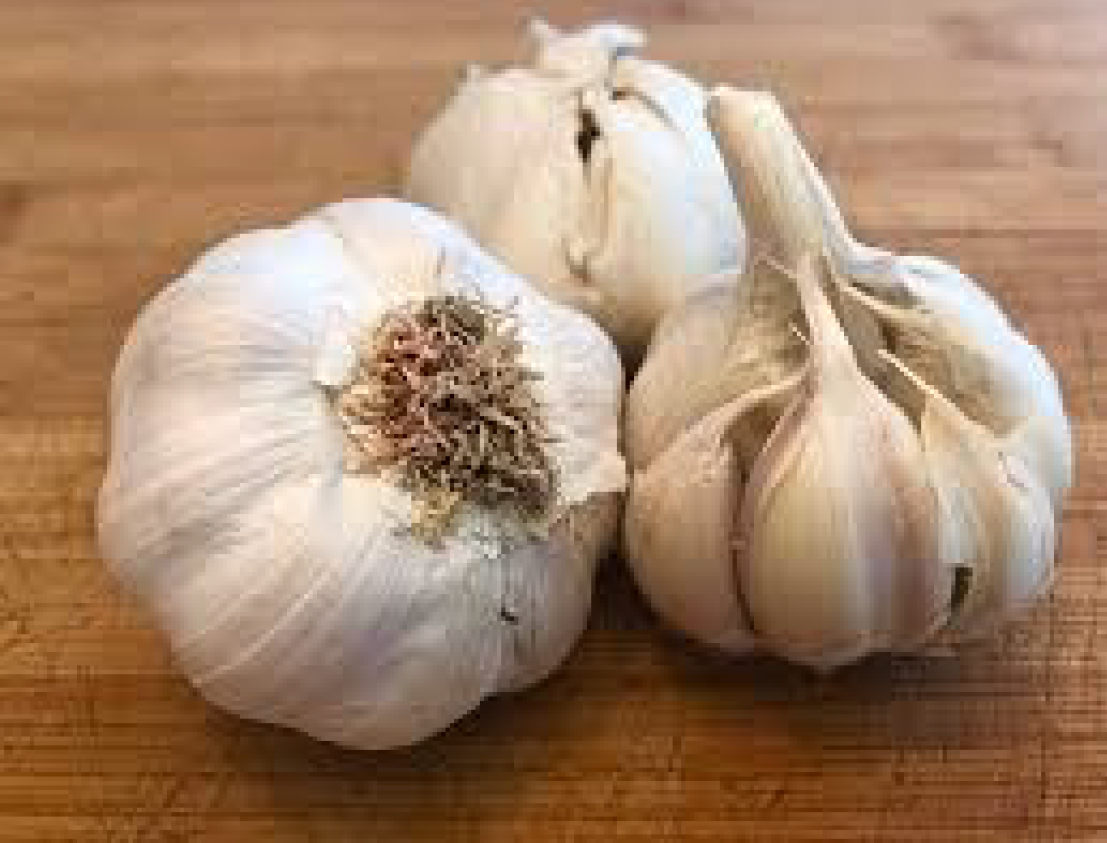
Leeks
Leeks look like large, overgrown scallions with a fat white tip and wide green leaves. Their flavor is sweeter and stronger than scallions, but milder than common bulb onions. Leeks must be carefully washed to remove the sandy soil that gets between the leaves. Leeks can be baked, braised or grilled as a side dish, or used to season stock s, soups or sauces.
- Select leeks that are firm, with stiff roots and stems. Avoid those with dry leave s, soft spots or browning. Leeks are available all year.
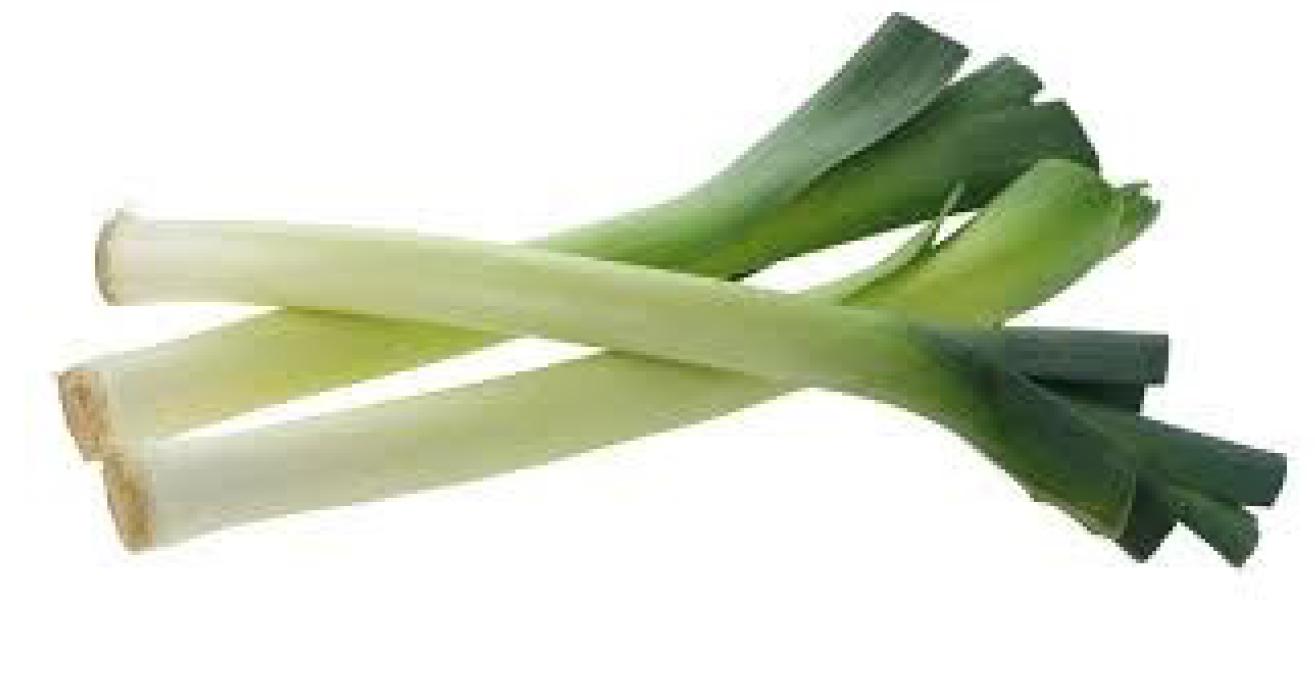
Scallions
Scallions, also known as green onions or bunch onions, are the immature green stalks of bulb onions. The leaves are bright green with either a long and slender or a slightly bulbous white base. Green onions are used in stir-fries and as a flavoring in other dishes. The green tops can also be sliced in small rings and used as a garnish.
- Select scallions with bright green tops and clean white bulbs. Avoid those with limp or slimy leaves. Scallions are available all year; their peak season is the summer.
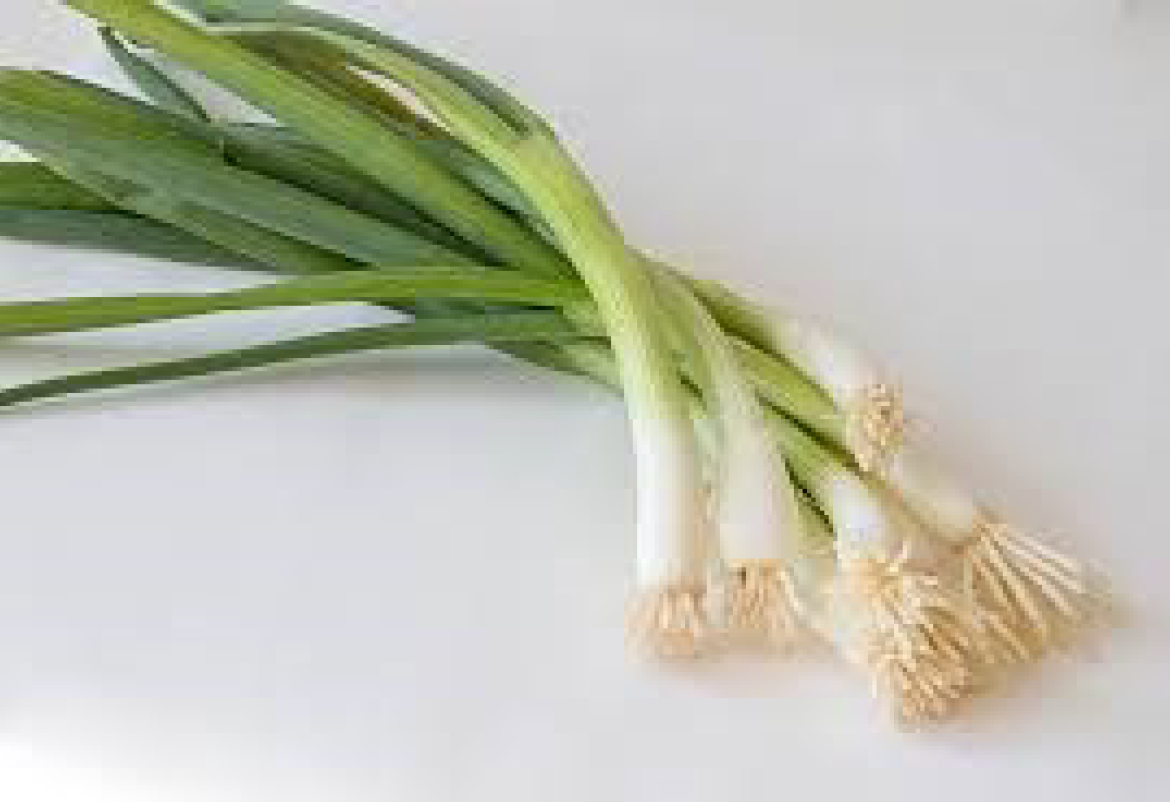
Shallots
Shallots are shaped like small bulb onions with one flat side. When peeled, a shallot separates into multiple cloves, similar to garlic. They have a mild, yet rich and complex flavor. Shallots are the basis of many classic sauces and meat preparations; they can also be sautéed or baked as a side dish.
- Select shallots that are plump and well shaped. Avoid those that appear dry or have sprouted. Store shallots in a cool, dry, unrefrigerated place. Shallots are available all year.
